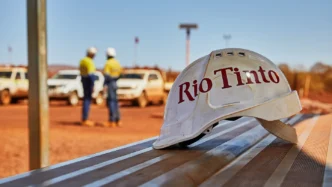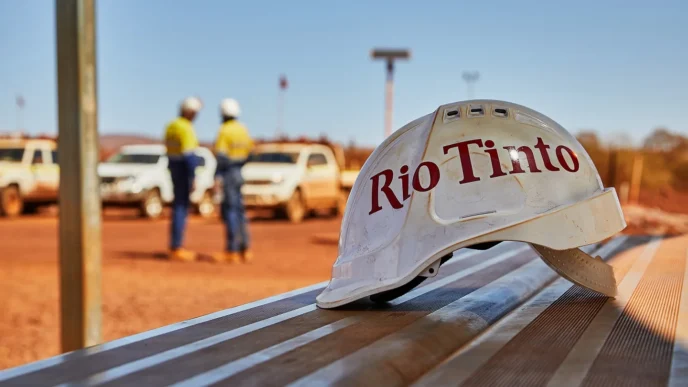The world’s most valuable semiconductor company, Nvidia Corp., is once again pushing the limits of the global chip supply chain. According to industry insiders, Nvidia CEO Jensen Huang has formally requested that Taiwan Semiconductor Manufacturing Co. (TSMC) allocate additional wafer capacity to meet surging demand for its artificial intelligence (AI) processors — a move that could reshape priorities across the semiconductor industry.
The request underscores the extraordinary strain AI computing demand is placing on global manufacturing, as Nvidia’s chips continue to dominate data centers, cloud platforms, and generative AI applications worldwide. But it also sets up a delicate balancing act for TSMC, which must juggle production among multiple major clients — including Apple, AMD, and Qualcomm — all competing for its most advanced nodes.
The Urgency Behind the Request
The AI revolution shows no signs of slowing. Nvidia’s flagship H100 and newly launched B200 “Blackwell” GPUs are the engines powering the next wave of AI infrastructure, used by every major hyperscaler from Amazon AWS to Google Cloud and Microsoft Azure.
Demand for these chips has outpaced even Nvidia’s optimistic projections, with lead times stretching beyond nine months in some cases. This has created a bottleneck not in chip design — Nvidia’s forte — but in chip fabrication, which remains dominated by a handful of foundries led by TSMC.
“We are shipping every GPU we can make,” Huang reportedly told executives during a recent supply review. “The world’s computing infrastructure is being rewritten for AI, and we need every wafer we can get.”
The comment reflects a new reality for the tech sector: AI chips have become the oil of the digital economy, and wafer capacity — once a technical metric known only to engineers — is now a defining strategic resource.
TSMC’s Dilemma: Balancing Growth and Scarcity
For TSMC, the world’s largest contract chipmaker, Nvidia’s request presents both an opportunity and a challenge. The company already dedicates substantial production at its 4-nanometer and 3-nanometer nodes to Nvidia’s data center GPUs, but those lines are running near full capacity.
Allocating more wafers to Nvidia would likely mean diverting resources from other clients or expanding production at considerable cost. TSMC’s 3nm process — used by Apple for its latest iPhones and Macs — is already booked solid, while next-generation 2nm technology is still ramping up at new facilities in Taiwan and Arizona.
Industry analysts suggest that TSMC could reallocate some advanced packaging capacity, particularly for CoWoS (Chip-on-Wafer-on-Substrate) — a process crucial to assembling Nvidia’s high-end GPUs — but doing so risks delaying deliveries for other AI and networking clients.
“It’s a zero-sum game right now,” said Kevin Cheng, a semiconductor analyst based in Taipei. “Every wafer that goes to Nvidia is one that doesn’t go to another high-value customer. TSMC has to make strategic trade-offs carefully.”
The Global AI Supply Race
Nvidia’s wafer request highlights a growing reality: AI infrastructure is the new industrial arms race. The world’s largest tech companies are pouring billions into GPU clusters to train massive AI models. Cloud giants like Microsoft, Amazon, and Google are competing to secure Nvidia chips months in advance, often buying in bulk and hoarding capacity.
In response, Nvidia is working aggressively to scale production across multiple regions, including Taiwan, South Korea, and the United States. Still, the backbone of its supply remains TSMC, which fabricates most of Nvidia’s advanced silicon using its N4 and N3 process nodes.
The U.S. government’s CHIPS and Science Act and TSMC’s expansion in Arizona could eventually help relieve pressure, but those facilities won’t reach meaningful production levels until late 2026 or 2027. Until then, Nvidia’s output will remain heavily dependent on TSMC’s capacity planning and geopolitical stability in the Taiwan Strait.
A Bottleneck in Advanced Packaging
Even more critical than wafer capacity is advanced packaging, the process that binds multiple chips together into one high-performance module — a vital step for Nvidia’s GPUs.
TSMC’s CoWoS technology is one of the only packaging methods capable of supporting Nvidia’s designs. Demand for this packaging has exploded so rapidly that TSMC has struggled to keep up, forcing many AI system builders to wait months for completed components even after the base silicon is ready.
To address the issue, TSMC plans to double its CoWoS capacity by mid-2026. However, scaling such advanced packaging lines requires billions in investment and complex engineering. Nvidia’s latest request reportedly includes a push for priority access to expanded CoWoS lines, signaling just how critical packaging has become in the AI supply chain.
Ripple Effects Across the Industry
Nvidia’s dominance has already created a ripple effect across the semiconductor sector. Competitors like AMD and Intelare ramping up their AI chip efforts, but both rely — to varying degrees — on TSMC’s production as well.
If Nvidia secures additional wafer capacity, those rivals could face even tighter constraints, potentially delaying their own AI product launches.
At the same time, AI server builders such as Supermicro, Dell, and Hewlett Packard Enterprise (HPE) are scrambling to source sufficient chips, while data center operators are rethinking infrastructure plans due to supply shortages.
“The bottleneck isn’t money — it’s manufacturing,” said Patrick Moorhead, an industry veteran. “You can’t deploy what you can’t make. Right now, Nvidia’s biggest challenge is simply physical supply.”
Investor Reaction and Market Outlook
Investors have taken note. Nvidia’s share price has surged nearly 400% since early 2024, propelling its market capitalization past $2.6 trillion and briefly surpassing Apple as the world’s most valuable company.
However, analysts warn that supply constraints could cap short-term revenue growth despite overwhelming demand. Nvidia’s ability to secure more wafers from TSMC will directly influence its production capacity — and, by extension, its earnings trajectory through 2026.
Meanwhile, TSMC stands to benefit from sustained AI investment. The company has guided for mid-teens revenue growth in 2026, with AI-related chips expected to account for more than 40% of its total business.
Still, as both firms expand into new U.S. facilities under political and logistical pressure, their interdependence will remain a defining feature of the global tech economy.
Geopolitical Undercurrents
The Nvidia–TSMC partnership also carries geopolitical weight. With Taiwan at the heart of global semiconductor manufacturing, U.S. policymakers see Nvidia’s reliance on TSMC as a strategic vulnerability. Washington has encouraged both companies to expand production on U.S. soil, but progress has been slow due to cost overruns and talent shortages.
At the same time, Beijing has been investing heavily in domestic AI chips to reduce dependence on Western technology. Chinese firms like Huawei and Biren Technology have made progress, but U.S. export restrictions on advanced GPUs have limited their access to high-end fabrication tools.
The global race to control chip production — and by extension, AI capability — has become a proxy competition for technological dominance among major powers.
Conclusion: A Defining Moment for AI’s Future
Jensen Huang’s call for more wafers from TSMC encapsulates the state of the modern tech world: limitless demand constrained by finite manufacturing capacity.
Nvidia’s rise has transformed the semiconductor industry from a cyclical hardware business into a strategic battleground for computing power. Every wafer TSMC produces now holds global economic significance — powering not just AI models, but national strategies.
As AI’s appetite grows and supply remains tight, the question is no longer whether Nvidia can sell more chips — it’s whether the world can build them fast enough.
In that race, Nvidia and TSMC stand at the center, shaping the trajectory of artificial intelligence, global innovation, and the future of technology itself.














